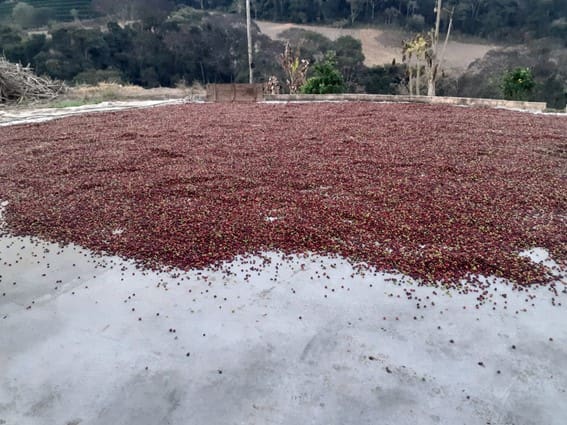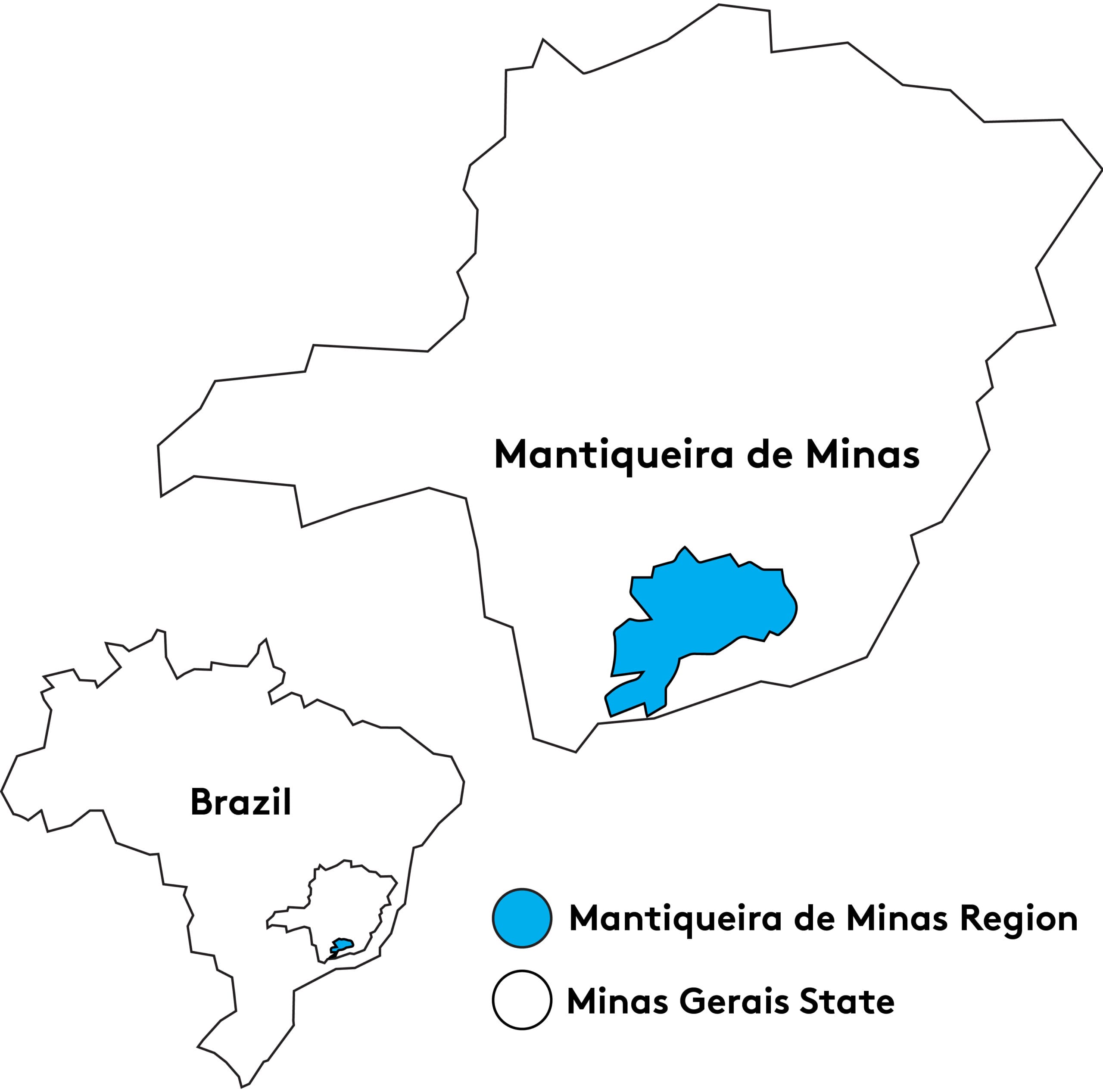Coffee producer Elisangela Aparecida de Sousa da Silva operates Sítio Água Limpa today in the Mantiqueira de Minas region of Brazil, though her history in coffee stretches back to before she had her own property. “My history with coffee started with ‘part coffee’, that is, half part because it was coffee shared with third parties,” she explains. “Over time, we managed to buy a piece of land that was already called the Água Limpa farm.”
In 2013, Elisangela discovered that her coffee was special, motivating her to overcome the difficulties that can come with coffee production. “In the beginning, the biggest challenge was financial, today the challenges are different, with very expensive inputs. Even so, our motivation is to know that we have a differentiated [specialty] coffee.” Today, treatments and crop management at the farm are based on soil analysis and a commitment to the correct fertilization for the plants.
This lot of Red Catuai coffee underwent Natural processing. Coffee cherries were first dried in the drying yard before being finished in a rotary dryer. Catuai was made by the Instituto Agronomico (IAC) of Sao Paulo State in Campinas, Brazil by crossing Mundo Novo and Caturra varieties. Catuai coffees are cultivated widely across Brazil, and are known for their high productivity potential.
This coffee was one of the top 6 entries in the Natural and Pulped Natural category of a competition held by AMECAFÉ Mantiqueira (The Association of Coffee Women Entrepreneurs in Serra da Mantiqueira) in October 2021. The association was founded in 2017 and now includes 130 producers, providing professional development and other events for women producers in the region.



